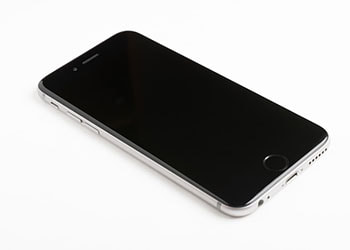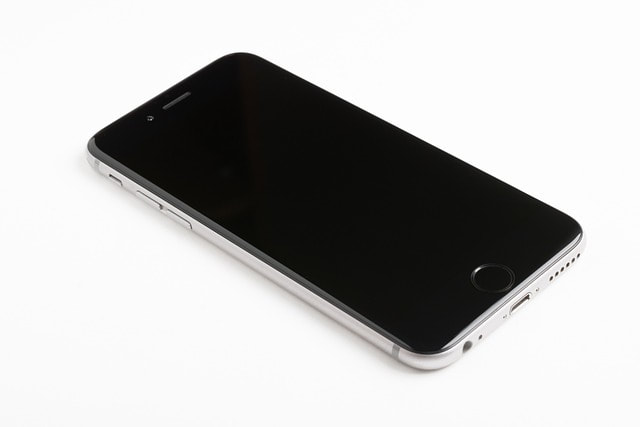|
By BD Bondy
If you have an older computer that has a mechanical hard drive, then you might consider swapping it out for a Solid State Drive, or SSD. The prices of SSD’s are much more reasonable than they used to be, so as a fairly inexpensive way to keep your computer going and speed it up, consider cloning the drive onto an SSD. A 500 gigabyte SSD costs $40 to $50 these days, on Amazon. Sometimes they are cheaper. Macrium Reflect has free software that allows you to clone your drive. The last thing you might need is an adapter cable to attach the SSD to your computer, and that is less than $10. Once you have all that, you attach the new SSD to your old computer, start Macrium Reflect, and ask it to clone your old drive. Reflect will ask you where to clone to, so select the new SSD. Go thru the prompts and it will finish in whatever time it takes, depending on your computer. Most clones will take about 30 minutes but it will depend on the size of the data and your particular computer. A hard drive with very little space could take several hours, as could a very slow computer. Once the clone is finished, you should be able to simply swap the drives, and the only thing you should notice is how much faster the computer is. I know I make it sound simple, and it really is, but if you are unfamiliar with it, or uncomfortable doing it yourself, then please ask for help. You can read about cloning on Macrium’s blog HERE.
0 Comments
By BD Bondy
Unfortunately, iPhones need replacing. Just like I never thought I’d spend $6 for a coffee (thank you Starbucks), I never thought I’d spend $1000 for a phone. Now, the phone is way more than a phone, obviously, and that iced decaf americano with 6 pumps vanilla syrup, foam cream and cinnamon is well worth 6 bucks, but how often do I need one? Verizon seems to want me to get a new phone every day or so, judging by the emails and messages I get. Certainly as often as I get a Starbucks coffee, and both are excessive, I admit. Still, I did get a new iPhone this year and I did have to transfer the data. While not as easy as not doing it, and only a little more difficult than having the Verizon guy do it, remember those days?, it was still pretty easy. The best thing to do is back it all up to cloud storage and then let it all download to the new phone. It’s an option on Android and iPhone both, so don’t be afraid, but plan to do it before you get the new phone. It’s good to think about these things before you find yourself having to do it at the last minute. A good article to read about transferring on the iPhone is HERE. For Android, click HERE. If it’s a brand new Android or iPhone, then before you start using it, it’s even easier to transfer as the new phone will prompt you to transfer data from an old phone when you first set it up. By BD Bondy
Carol Worries About me And because of that, Apple is introducing a new feature to their phones. Satellite texting is supposed to be introduced with iOS 18, sometime in September. Messages via satellite will automatically prompt users to connect to the nearest satellite right from the Messages app when they are out of reach of cellular service. This will allow iPhone users to send and receive texts, emoji, and tapbacks over iMessage and SMS. It’s expected to be free initially If you are on a version in the IOS 16’s, depending on where you live, then you may have noticed that SOS messaging is available via satellite. Where I go hiking, usually by myself, I don’t often have cell service, so being able to send an SOS via satellite makes Carol feel a bit better. You can read about iPhone emergency satellite texting HERE. Android is working on this feature as well, but they are a little behind. You can read more about them HERE. What all this suggests is that we will eventually be going to satellite for our calling as well. Considering the number of satellites up there already, and the amount companies are trying to launch, it looks like this will start in the next few years. In a way, this is great, as it will mean connectivity nearly anywhere. On the downside, well, where do I begin? So I won’t. If you have cell service, then you have internet service, as the two go hand in hand. You can see where this is going, right? WiFi service will be ‘converting’ over to cell service. Or, the two services will merge to be a more blurred and non-specific connectivity service. My opinion is rightfully worthless, so I’ll continue on with what seems to be the inevitable. Having satellites as communication relays certainly suggests better connectivity almost anywhere. If you have access to the sky, then, in theory, your phone should be able to connect. This may very well happen before Abiquiu gets fiber. In fact, flying cars may happen before Abiquiu gets fiber. In fact, flying cars are already being used in China, read about that HERE. By BD Bondy
I have a tiny desktop computer I use to write these articles on. I use my smartphone for everything else. I do use a Kindle to read, but not often. So, the question is, do I really need my computer? For me, I’d say no. I used Carol’s iPad to write articles while we were travelling. That screen was comfortable enough for me, and she has a keyboard that it fits in, so it was all quite comfy. If I had to work a full-time job, I would guess that a laptop or my computer would be my choice, but since I only write on a weekly basis, I was fine using these smaller devices. When I used Chat-GPT, I used just my phone, so that’s a thought. There used to be a computer that could use your smartphone as the ‘brain’. I don’t remember the brand, but it didn’t last long. Phones change so quickly that must not have been practical. Still, I liked the idea of a computer that could grow as your phone got bigger & better. I read an article from CNET about a staff member using a Samsung phone to replace her computer. She attached it to a monitor, and a Bluetooth keyboard and mouse may also be attached. She wrote a detailed article on her experience HERE. The article is worth reading. She seemed to think it went well, and an iPhone could do all that as well, so it’s worth considering whatever brand phone you have. Who knows? Maybe this will be my last desktop computer. Note from Carol: Our Recent survey shows this might already be the case for many of you. 27% of our readers open the News on their Smart Phone and 19% open it on a tablet. I’ve written about Starlink before. I think it’s the best way to get internet in our area, and likely in most remote areas. Directly around here, a T-Mobile hotspot makes sense if you can access the tower by the rural events center.
I thought I paid $599 dollars for my setup of Starlink, but apparently the price has been $499 for a while now. We just got notified that the price has come down to $299 in some areas. I checked, and our area seems to be at that price. I don’t know if this price is temporary or not, but at $299, it’s a really good price for the Starlink product. It’s still $120/month for the service, but it’s been extremely reliable and the speed has increased over the two years we’ve had it. Click got more information Also, I was notified that I can get a ‘mini mobile’ Starlink setup that is a companion to my regular Starlink account. What that gives me, for $499 up front and $30/mo., is a smaller satellite and router setup that I can use when I travel. It’s a neat idea though I doubt I’ll be doing it. Carol and I have been talking about getting the other mobile unit they have, but at $150 a month and another $499 up front, it’s quite spendy, since I’d need to keep the other Starlink. The mini Starlink gives only 50Gb of data a month, which wouldn’t work for us. We have ‘unlimited’ data with our regular Starlink, so why they think a measly 50Gb would be sufficient is a mystery, but that’s the deal. Since I get 50Gb of data using my phone as a hotspot, that deal is crap, basically. If it were unlimited data, then I would do it, since we have been travelling so much. There are various plans they offer, but they are prohibitively expensive for us. You can check out their page above to see them all. Maybe they have something that’ll work for you. |
Tech TipsThere's a lot of fake information out there. Please be scrupulous about what you share on Facebook and other platforms. Here are some trusted sources. Please don't rely on social media for your information.
Abiquiu Computer Recycling
Abiquiu Computers gives away available computers for FREE. We recover used pc’s and upgrade them, repair them, refurbish them so they may have another life with someone else. CategoriesArchives
October 2025
|






 RSS Feed
RSS Feed